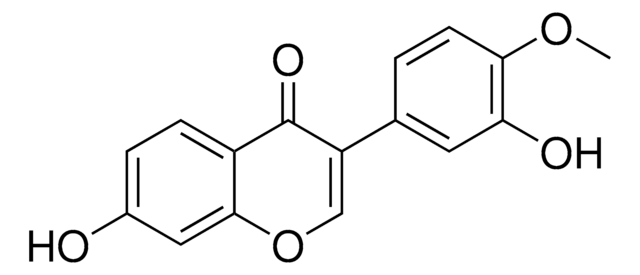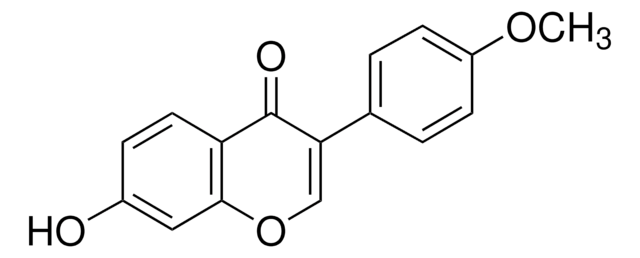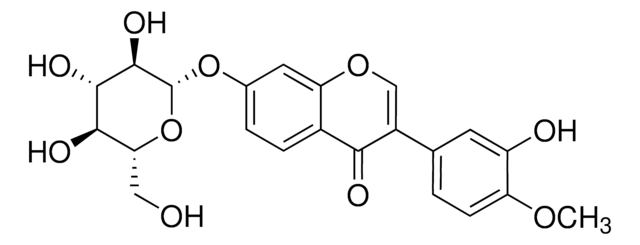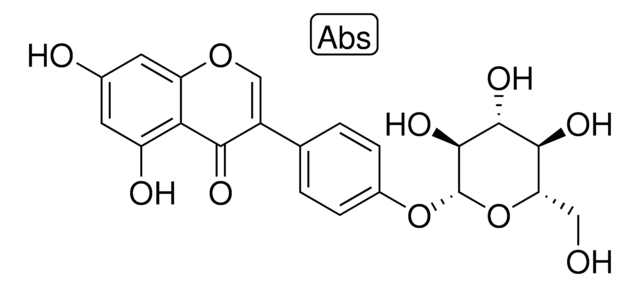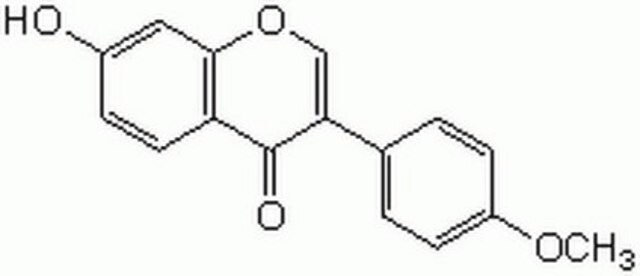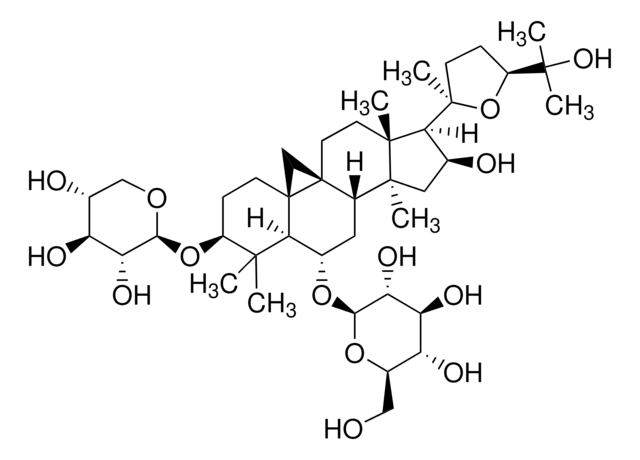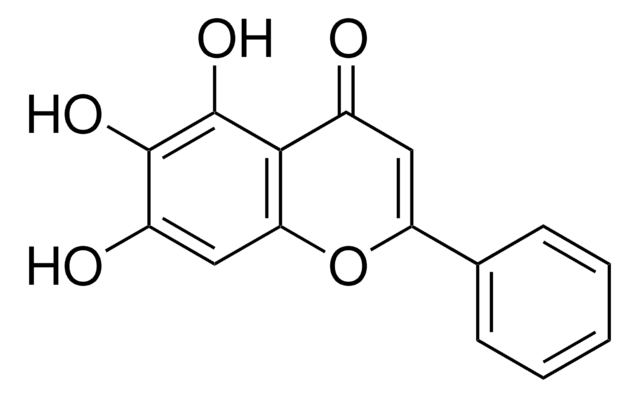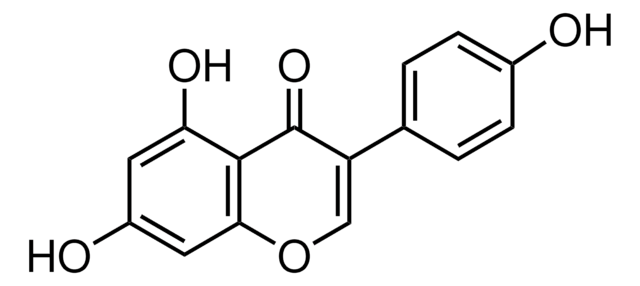B9938
Calycosin
≥98% (HPLC)
Sinónimos:
3′,7-Dihydroxy-4′-methoxy-isoflavone, 3′-Hydroxyformononetin, Cyclosin
About This Item
Productos recomendados
Nivel de calidad
Ensayo
≥98% (HPLC)
Formulario
powder
color
white to light yellow
solubilidad
methanol: 1 mg/mL, clear, colorless
aplicaciones
metabolomics
vitamins, nutraceuticals, and natural products
temp. de almacenamiento
2-8°C
cadena SMILES
O=C1C(C(C=C2)=CC(O)=C2OC)=COC3=CC(O)=CC=C13
InChI
1S/C16H12O5/c1-20-14-5-2-9(6-13(14)19)15-8-12(18)11-4-3-10(17)7-16(11)21-15/h2-8,17,19H,1H3
Clave InChI
QAGGICSUEVNSGH-UHFFFAOYSA-N
¿Está buscando productos similares? Visita Guía de comparación de productos
Categorías relacionadas
Descripción general
Aplicación
- to study its effect on the repression of glioblastomas by having an inhibitory effect on the expression of tyrosine-protein kinase Met (c-Met)
- to analyze its effect on the growth of nasopharyngeal carcinoma cells by modulating the long non-coding RNA, Ewing sarcoma-associated transcript 1(EWSAT1)
- to evaluate its effect on the left ventricular ejection fraction in rat model with myocardial ischemia
Acciones bioquímicas o fisiológicas
Palabra de señalización
Warning
Frases de peligro
Consejos de prudencia
Clasificaciones de peligro
Skin Sens. 1
Código de clase de almacenamiento
11 - Combustible Solids
Clase de riesgo para el agua (WGK)
WGK 3
Punto de inflamabilidad (°F)
Not applicable
Punto de inflamabilidad (°C)
Not applicable
Elija entre una de las versiones más recientes:
¿Ya tiene este producto?
Encuentre la documentación para los productos que ha comprado recientemente en la Biblioteca de documentos.
Los clientes también vieron
Nuestro equipo de científicos tiene experiencia en todas las áreas de investigación: Ciencias de la vida, Ciencia de los materiales, Síntesis química, Cromatografía, Analítica y muchas otras.
Póngase en contacto con el Servicio técnico